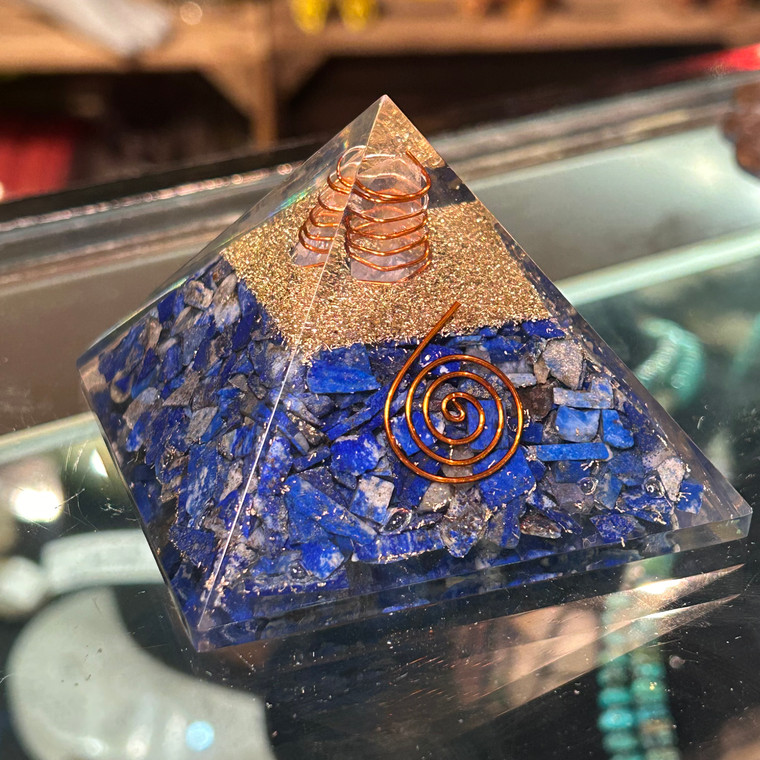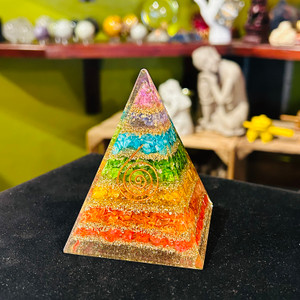
Lapis Lazuli Orgonite Pyramid
From the Persian word lazhuward meaning blue, Lapis is composed of lazurite, pyrite, and calcite. Lapis lazuli artifacts, dating back to 7570 BC, have been found at Bhirrana, the oldest site of the Indus Valley Civilization.
Lapis has a unique home in the history of art and, in the Middle Ages, was used to create the pigment "ultramarine." This shade was used by some of the most iconic artists of the Renaissance, including Masaccio, Perugino, Titian, and Vermeer. In painting, Ultramarine was often used for clothing, especially for the Virgin Mary. Ultramarine has also been discovered in the dental tartar of medieval nuns and scribes as a result of licking their paint brushes.
The Sumerians believed that the spirit of gods lived within each stone.
In Ancient Egypt, it was used as a symbol of the night sky.
Lapis Lazuli is associated with royalty, strength, courage, wisdom, and intellect. Many mediums find themselves drawn to this stone.
From the Persian word lazhuward meaning blue, Lapis is composed of lazurite, pyrite, and calcite. Lapis lazuli artifacts, dating back to 7570 BC, have been found at Bhirrana, the oldest site of the Indus Valley Civilization.
Lapis has a unique home in the history of art and, in the Middle Ages, was used to create the pigment "ultramarine." This shade was used by some of the most iconic artists of the Renaissance, including Masaccio, Perugino, Titian, and Vermeer. In painting, Ultramarine was often used for clothing, especially for the Virgin Mary. Ultramarine has also been discovered in the dental tartar of medieval nuns and scribes as a result of licking their paint brushes.
The Sumerians believed that the spirit of gods lived within each stone.
In Ancient Egypt, it was used as a symbol of the night sky.
Lapis Lazuli is associated with royalty, strength, courage, wisdom, and intellect. Many mediums find themselves drawn to this stone.






